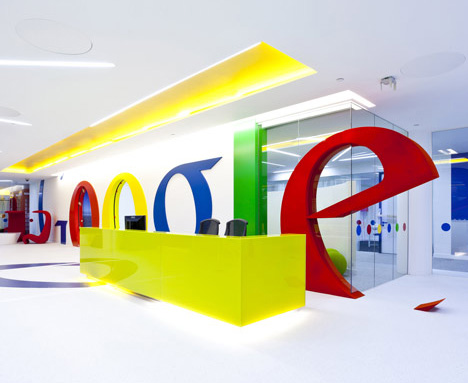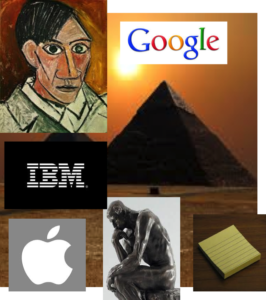YOUR BRAIN
YOUR BRAIN

White matter of a healthy brain, visualized with diffusion tensor imaging. Source: Discover Magazine
IBM asked 1500 CEO’s to list the most important leadership characteristics, and creativity was ranked higher than integrity, intelligence and a global mindset.
Fact: creativity has borne some of our greatest innovations. It’s one thing to know that creative practices protect your brain and make you happier; it’s another to understand how to your creative brain works so you can ramp up your creativity and benefit from the results. While there is no simple explanation for exactly how creativity manifests in our brains, we do know that multiple processes in three specific areas work together in helping us come up with new ideas. [1]
To Boost Your Creativity Levels, here are a few things to know:
1. Your Brain Can be Re-trained:
Science has proven that the brain is “neuroplastic” – this means it is constantly changing, until we leave this earth. New neural pathways are continually being created, and old, out-moded ones are dying off, in process called “neural pruning.” According to Neuroscientist and bestselling author Dr. Rick Hanson, the brain and mind are one system. This means we can use our minds to change our brains, decrease our stress responses, and increase our feelings of wellness.
It naturally follows that we can also re-train our brains to be more creative.
2. There are Neural Correlates to Creativity (In other words, definite things happen in the brain when we are creating).
In the BBC documentary, The Creative Brain: How Insight Works, six scientists and researchers investigated exactly what goes on in the brain during moments of insight; when the proverbial light bulb goes off, and new ideas are born.
One of the six researchers is Dr. Charles Limb, a hearing specialist who plays sax, piano and bass in his spare time. Combining his two passions, Dr. Limb put jazz musicians with special keyboards into an MRI machine to document brain activity during musical improvisation, a time when musicians are typically “in the moment,” and creatively connected. He repeated his research with rappers, cartoonist and illustrators. The results have incredible implications for living more creatively.

Dr. Limb observed a significant decrease in the area of the brain known as the pre-frontal cortex; the area that is in charge of “watching” our actions. He calls it the “gatekeeper” – it is very active much of the time; consciously monitoring our behaviors and ensuring we say or do the “right” things. During the improvised creative process of playing jazz, the “gatekeeper” quiets down dramatically.
3. You Can Up Your Creative Ante
Can we actively/consciously quiet our gatekeeper to increase our creativity? It’s called “Cognitive Slowdown,” (aka quieting your mind) and, since the brain is neuroplastic, the answer is “yes.”
- Meditate, Spend Time in Nature and Listen to Music: These activities, especially meditation, have been proven to slow down activity in pre-frontal cortex, decreasing thoughts and quieting the gatekeeper. Opportunity abounds for new neurons to form and connect in new ways, paving the way for creativity to arise.
- Neural Disruption: By disrupting normal routines and thought patterns, we create new neural, creative pathways. According to Dr. Simone Ritter, another researcher in the BBC video, “Unexpected experiences can temporarily up creativity scores by 10 – 15%, generating insight and innovation.” Hence the term, “Thinking on your feet.” Neural disruption to increase creativity may be as simple as putting a different shoe on each of your feet, changing the way you drive to work or re-arranging furniture.

Google Offices, London
Your Environment: According to research, noise, color, temperature and lighting can boost creativity levels. According to Kathleen D. Vohs, lead researcher in a recent study published in the Journal of Environmental Psychology, “Being creative is aided by breaking away from tradition, order, and convention and a disorderly environment seems to help people do just that.” [2]I also swear by “an organized mess,” but I have to believe all of this depends on what exactly you are doing or trying to achieve. I’m an artist, so for me the mess is perfect, as long as I know where everything is. That said, a brainstorming session may have completely different requirements.
- Sounds True: A University of Chicago study found that ambient noise was optimal for creativity, whereas extreme quiet sharpens our focus, making it hard for us to think creatively.
- Dim the Lights: Lighting also has an impact on creativity: research published in the Journal of Environmental Psychology investigated the difference in creativity levels in brightly-lit and dimly-lit environments. Dim lighting was the creativity winner, as it helps us feel freer, less constrained and more willing to take risks, which is no surprise to romantics.
- Warm-Up: Studies on productivity versus temperature have proven that feeling cold is a definite distraction, so turning up the heat may help turn up ideas. However, too much heat brings on lethargy, which inhibits creativity, so a room temperature just right for you is the key.
- COLOR Your World – or Not: Color can have a tremendous impact on creativity, and different colors can influence different goals. Shades of green have been proven to increase creative thinking and may be right on par for a brainstorming event. Yellow inspires optimism and feelings of happiness, which is why we love sunshine. The calming qualities of blues and teals promote a sense of relaxation, which may help quiet the “gatekeeper” and open the creative floodgates. And, while white may be perceived as sterile, the sense of simplicity and openness it provides can boost creative juices.
- Embracing Mistakes: “If you are not making a mistake, it’s a mistake.” – Miles Davis
 If you want to be more creative, you’ve got to love mistakes. As an artist, embracing mistakes has become my mantra, leading me in completely new creative paths. It has also guided the way I live and everything I teach.
If you want to be more creative, you’ve got to love mistakes. As an artist, embracing mistakes has become my mantra, leading me in completely new creative paths. It has also guided the way I live and everything I teach.
Throughout history, some of our greatest discoveries have come from multiple failures and/or “happy accidents.” The Wright Brothers, Thomas Edison, Steve Jobs and every other inventor since time had it down: explore everything that goes wrong until you get it right. They knew that being open to any outcome is the heart and soul of innovation and invention.
 The bottom line to being more creative? If you have made the “mistake” of setting yourself up in a freezing cold, brightly-lit room with blaring music playing, it’s true; you might not invent the next light bulb. But depending on what else is in the room, the neural disruption going on in your brain may help you figure out how to quiet your mind, make a blanket, create shade and somehow drown out the sound.
The bottom line to being more creative? If you have made the “mistake” of setting yourself up in a freezing cold, brightly-lit room with blaring music playing, it’s true; you might not invent the next light bulb. But depending on what else is in the room, the neural disruption going on in your brain may help you figure out how to quiet your mind, make a blanket, create shade and somehow drown out the sound.
[2] https://www.theatlantic.com/health/archive/2014/09/how-environment-can-boost-creativity/379486

